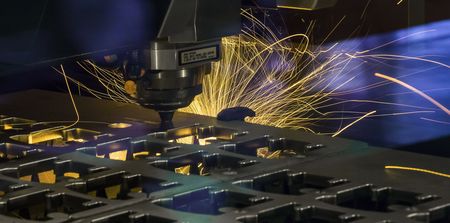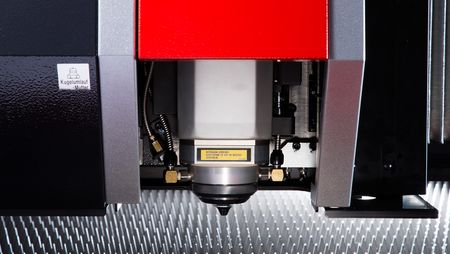AMADA is a point of reference in the laser cutting machine market and the first manufacturer in the world to have developed its own fiber generator in 2005.
The company produces all the elements of the cutting machines, including numerical control - then the interface part - and programming software. This allows an extraordinary level of control, but also flexibility and great customization capacity based on the concrete needs of customers.

Power but, above all, quality
The cutting quality depends on several factors, including the laser source, the power of the diodes of the individual modules, the focus, the service gas and any proprietary technologies. From a higher point of view, one could say, however, that the quality of the result depends on that of the source and on the ability to better control the laser beam, which many proprietary AMADA technologies are aimed at

The high power, but especially the quality of the beam, are peculiar characteristics of AMADA machines, which integrate fiber generators with high power diode modules (3 and 4kw, allowing cutting capacities of 3, 6, 9 and 12kw in the ENSIS series) minimizing incoming beams. AMADA fiber lasers, using high-power diode modules, actually reduce the quantity and, at the same time, increase the quality of the final result. With all the benefits of the case: no subsequent processing, quality assurance, customer satisfaction and increased productivity.

AMADA technologies that improve cutting quality. Quality, but also productivity and profitability are affected by various proprietary AMADA technologies.
ENSIS adopts Variable Laser Beam Control (VARIO) technology, which the company has been perfecting progressively since 2014 and which allows a complete level of laser beam control and modulation. The variable beam control acts by automatically and incrementally adapting the laser beam mode to the type and thickness of the material to be cut, allowing not only flexibility and quality, but also speed thanks to the reduction of setup times due to the use of a single cutting lens for all materials and thicknesses.

The AMADA auto-collimation technology, present on ENSIS cutting machines with a 6kw, 9kw and 12kw generator, has a strong qualitative impact. In this case, it is the very precise control of the position of focus and the size of the spot that determines tangible benefits, referred in particular to the instantaneous removal of the molten material from the cutting groove, to which are added the high quality of the cut edge and a better perpendicularity of the cut.

Moving into the VENTIS world, the (proprietary) technology of reference from the qualitative point of view is LBC, acronym of Locus Beam Control. LBC models the geometry of the laser beam path, providing extraordinary benefits in terms of productivity, flexibility and quality. With regard to the latter, LBC owes its benefits to the ability to apply the laser beam power evenly over the entire cutting groove, while traditional technology determines a progressive reduction of heat as you move away from the surface. If in the latter case, in fact, it becomes difficult to efficiently remove the material, LBC obtains slag-free cuts, for a significant reduction (or absence) of subsequent processing and improvements also in terms of production capacity. Moreover, thanks to the ability to modulate the width of the kerf, the removal - both manual and with an automatic sorting system - of the pieces is simplified, allowing a stable and uninterrupted operation.